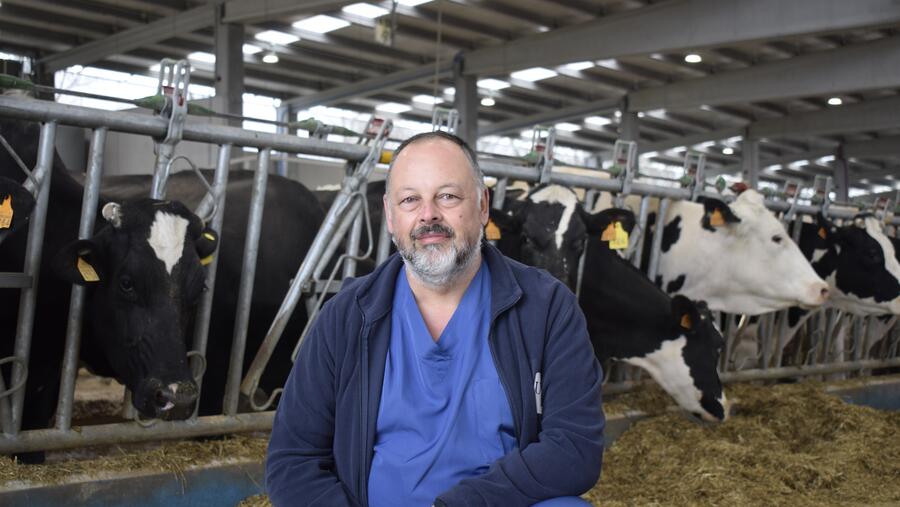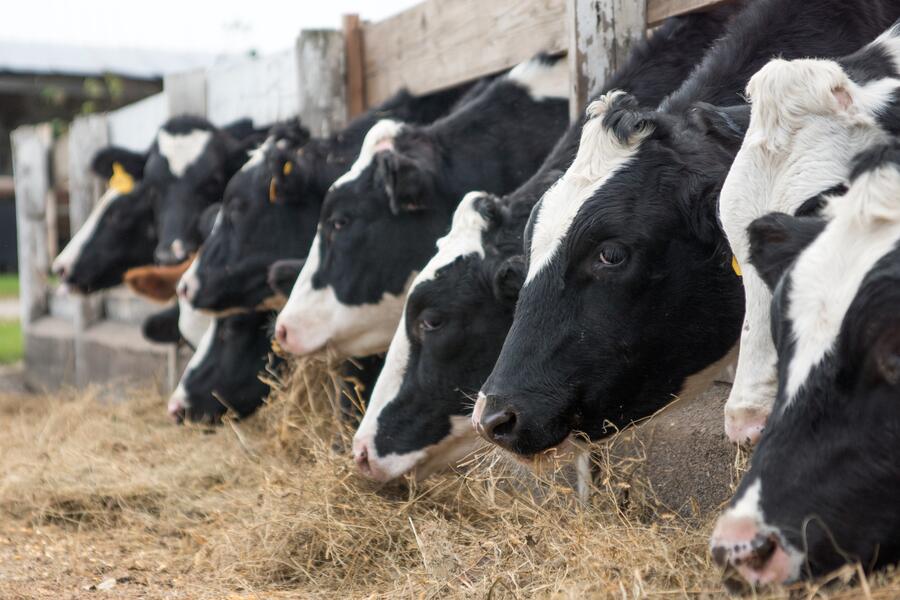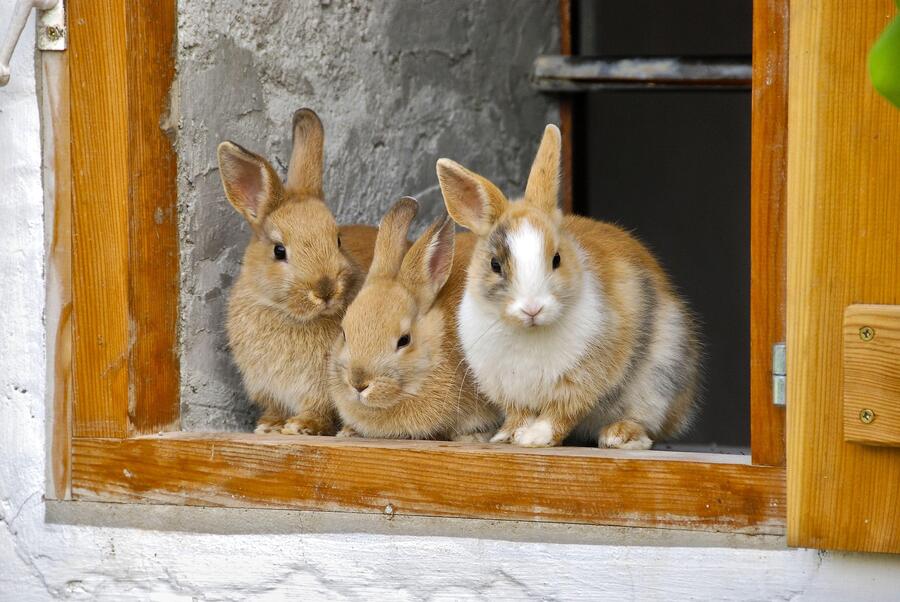Luis Ángel Quintela: «If a cow is efficient from a reproductive point of view, it produces less methane per kg of milk produced»

Cattle farms have been in the spotlight for many years due to their production of methane, a gas naturally generated in the complex digestive system of ruminants, which is one of the primary greenhouse gases contributing to global warming.
Currently, various avenues are being explored to minimize its impact. One of them, perhaps surprisingly, is reproductive efficiency, a subject of great interest in today's world and one that can also be applied to a wide range of areas, including productivity, human health, and food safety.
Today, we speak with Luis Ángel Quintela Arias, a professor in the Department of Animal Pathology at the Faculty of Veterinary Science on the Campus Terra and one of the leading experts in this field, to discuss the possibilities this discipline can offer our society.
-What are the main lines of research you are pursuing within the animal reproduction group, and how have they been consolidated throughout your career at IBADER?
-One of the lines we have been working on for a long time is reproductive efficiency in dairy cows. It encompasses various fields, including diagnostic methods such as cytology and ultrasound, as well as oviductal permeability, treatments, hormonal protocols, and antibiotic replacement therapies, as well as causes and risk factors for infertility.
Similarly, we are committed to working from a sustainability and climate change mitigation perspective. Public opinion is exerting significant pressure on issues such as methane, for example.
What we want to do is demystify the notion that cows are the primary problem while acknowledging that they are indeed significant methane emitters and working to mitigate this. If a cow is very efficient from a reproductive point of view, it produces less methane per kg of milk. However, there is still a lot of work to be done in this area.
Another very important line of work is rabbit farming. Our goal in this area is to enhance the reproductive efficiency of rabbits through more natural methods.
Rabbit breeding is very intensive today. Artificial insemination is used in virtually all cases, as are hormones. So, what we are trying to do is reduce the use of hormones, on the one hand, and make it easier for rabbit farmers to apply reproductive technologies, on the other.
In fact, we have a patent for an artificial insemination system in rabbit farming that significantly improves the entire insemination process by applying hormones directly to the semen dose.
Finally, regarding IBADER, we have been in operation for less than a year, so we have not yet had the opportunity to establish ourselves as such. Even so, I believe that our research perspective aligns well with IBADER's lines of research, particularly those related to livestock resources and healthy, sustainable nutrition.
-A significant part of your work focuses on repeat breeding syndrome. What recent advances would you highlight in the understanding or treatment of this reproductive problem?
-This is a topic we have been studying for a long time, and we do so somewhat altruistically, as it is not easy to obtain funding for this area of study. However, it is undoubtedly a very important line of research, as many cows suffer from repeat oestrus syndrome, which reduces their reproductive efficiency. Reproductive efficiency translates directly into financial benefits on a cattle farm.
We are currently focusing our research on omics, a topic that is very popular at the moment. As this syndrome is a complex problem influenced by numerous factors, we are beginning to study elements such as the microbiota, which may differ in animals with repeat estrus syndrome compared to those without it.
We are also examining metabolomics to determine the distinct metabolic profiles.
Currently, we are working on topics that have already been established, such as subclinical endometritis and oviductal permeability. In relation to the latter, we have developed methods for performing cytology and monitoring oviduct permeability.

-In recent years, you have published several studies on chemical biocommunication and biostimulation in rabbit farming. What potential do these techniques have for improving reproduction in other species?
-As I mentioned before, our main objective was to facilitate artificial insemination by applying the hormone directly to the semen. Now, what we want to do is reduce the application of hormones.
We use biostimulation methods in rabbits, but we want to take it a step further, thanks to chemical biocommunication between animals.
This also has effects on the reproduction of various species, such as cows, sheep, goats, and pigs. It has been seen that, through the male effect and the pheromones involved in the process, it is possible to postpone puberty, shorten anestrus, or facilitate the diagnosis of estrus.
In rabbit farming, in particular, we are looking to increase semen production in males. If this amount is increased, the number of males needed is reduced. For females, we are working to improve the synchronization of estrus, aiming to increase the number of ovulations to enhance fertility and prolificacy.
We work with rabbits, but in pigs, for example, there are already commercial products to increase production efficiency.
-You have worked on the application of techniques such as Doppler ultrasound and rectal palpation to evaluate luteal function. What advantages do these methodologies offer for optimizing embryo transfer programs in cattle?
-We have been studying ultrasound in cattle for a long time. At the beginning of this century, in fact, it was hardly used at all. It was used in human diagnostics and even in horses but very little in cattle.
We began researching this field early on, which ultimately led to greater efficiency in examinations. If rectal palpation is provided, say, 70-75% efficiency, ultrasound could reach 90%.
This is applicable, for example, to the detection of a follicle, a corpus luteum, or pathologies in the uterus. It is also very useful in embryo transfer, as Doppler ultrasound enables us to visualize the blood flow to the corpus luteum and, thus, better understand its functionality.
However, to determine consistency, we would still have to resort to the hand, which is also very important.
To put it one way, we could say that we have experienced the entire evolution of this technology. We have been involved in introducing this technique in bovine reproduction, and to be honest, we are quite pleased with it.
In fact, we have published a book and several scientific articles, but where we have gained the most experience is in delivering courses and teaching many people how to work with this method.
-In the field of teaching, how do you transfer the knowledge gained from your research projects to your students? Do you consider practical teaching to be key in veterinary medicine?
-In the veterinary curriculum, we currently have 50% lectures and 50% practical classes. Therefore, I believe that practice is critical. Of course, theory is also very important, but without practice, our students would be missing a very important foundation.
How do we transfer this knowledge we have discussed to students? For example, in the field of bovine ultrasound. When I started teaching, there were no ultrasound practices in place. When we began studying this topic, the first thing I did was establish a practice for the students.
Everything we learn through our research must be presented at a practical level. There are certain topics, such as biostimulation or estrus cycle syndrome, that are more theoretical in nature. However, in general terms, I would like to be able to transfer more knowledge from a practical perspective.
Another important aspect is digitization, the use of programs and algorithms. We have also been introducing this in relation to reproduction management, with the aim of ensuring that students leave prepared and at the same level as people who have been working for several years and have already mastered these techniques.

-Your participation in projects such as Bovimasc and Climate-Smart Research reflects a multidisciplinary approach. What role do interdisciplinary collaborations play in the development of solutions applied to the livestock sector?
-In the past, we were very individualistic, and that doesn't make sense today. We can't know everything; it's impossible.
For example, in rabbit farming, we have a national project involving several disciplines, including anatomy, biochemistry, and genetics. Why? Although I may be familiar with evaluating the effects on females, I lack expertise in areas such as proteomics and transcriptomics, for example. However, at the university, there are experts in these fields.
So, what's the point of me trying to cover all aspects of the research when there are colleagues who do it much better than me?
A clear example is Bovimasc, where we collaborate with robotics. With everything that's going on in Smart Farming today, robotics is essential. Needs are identified, and we look for people who can contribute their knowledge in that area.
Nowadays, those who work alone often face a bleak future. Everything is interrelated, and fortunately, we have a very comprehensive campus with strong groups. We have all the collaboration we need right around the corner.
-You have coordinated chapters in manuals such as “Reproductive Techniques in Animal Species” (Elsevier). How important is technical and scientific dissemination in the continuing education of professionals in the sector?
-The evolution is exponential. In addition, the curve is becoming increasingly vertical and advancing more rapidly. From one year to the next, new technology emerges that you need to know about.
On the other hand, dissemination is very important. The problem is that, currently, there is a lot of non-scientific dissemination on social media that can lead to misunderstandings. That is why there must be quality dissemination, told by people who really know what they are talking about.
Another issue that affects veterinarians is the large amount of information available, which cannot be consulted in its entirety due to lack of time. To address this issue, a key part of our work involves collecting and synthesizing this information so that professionals can easily and concisely review it.
With our books on ultrasound, for example, we make the work easier for veterinarians who lack the time to delve deeper into these topics.
-What challenges do you currently see in veterinary research in animal reproduction, especially in relation to climate change and new demands from the agri-food sector?
-On the one hand, there is the issue of digitization. We need to be prepared to learn about new technologies and implement them in the veterinary curriculum.
On the other hand, the issue of carbon footprint is also extremely important. There are new regulations that require a reduction in emissions, not only of methane but also of other gases. It is likely that, in the near future, companies will only collect milk from farms that meet specific minimum requirements in this regard.
Similarly, we also face a major challenge with the use of hormones and antibiotics. We are working to reduce their use, and thanks to developments such as activity collars, aspects like heat detection are improving considerably, making it possible to minimize hormone treatments.
In any case, I must point out that when a meat or dairy product is consumed, it will contain virtually no traces of hormones, as they degrade very quickly.
-Finally, what advice would you offer to young researchers who wish to specialize in animal medicine and surgery, focusing on innovation and rural development?
-The first thing I would like to emphasize, once again, is digitization: you have to be there. Farmers receive a large amount of data, making it very difficult to manage effectively. Therefore, we should not wait for companies to train farmers; veterinarians must also participate in this.
In fact, the effort is a company run by a guy who graduated from our veterinary faculty, called Innogando. He is a veterinarian and works precisely in this field.
On the other hand, we must also focus on climate change. The incidence of many diseases is increasing due to the emergence of new vectors that did not previously exist.
From a public health perspective, veterinarians play a crucial role. We are guardians of human health: many diseases that will emerge are likely to be zoonoses, and veterinarians are the first line of defense against them.
